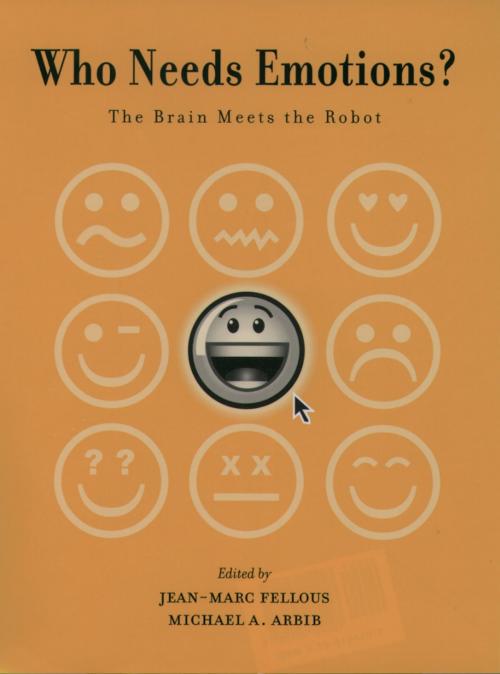Who Needs Emotions?
The Brain Meets the Robot
Nonfiction, Science & Nature, Technology, Robotics, Health & Well Being, Medical, Specialties, Internal Medicine, Neuroscience, Computers, Advanced Computing, Artificial Intelligence| Author: | ISBN: | 9780190290276 | |
| Publisher: | Oxford University Press | Publication: | March 24, 2005 |
| Imprint: | Oxford University Press | Language: | English |
| Author: | |
| ISBN: | 9780190290276 |
| Publisher: | Oxford University Press |
| Publication: | March 24, 2005 |
| Imprint: | Oxford University Press |
| Language: | English |
The idea that some day robots may have emotions has captured the imagination of many and has been dramatized by robots and androids in such famous movies as 2001 Space Odyssey's HAL or Star Trek's Data. By contrast, the editors of this book have assembled a panel of experts in neuroscience and artificial intelligence who have dared to tackle the issue of whether robots can have emotions from a purely scientific point of view. The study of the brain now usefully informs study of the social, communicative, adaptive, regulatory, and experimental aspects of emotion and offers support for the idea that we exploit our own psychological responses in order to feel others' emotions. The contributors show the many ways in which the brain can be analyzed to shed light on emotions. Fear, reward, and punishment provide structuring concepts for a number of investigations. Neurochemistry reveals the ways in which different "neuromodulators" such as serotonin, dopamine, and opioids can affect the emotional valence of the brain. And studies of different regions such as the amygdala and orbitofrontal cortex provide a view of the brain as a network of interacting subsystems. Related studies in artificial intelligence and robotics are discussed and new multi-level architectures are proposed that make it possible for emotions to be implemented. It is now an accepted task in robotics to build robots that perceive human expressions of emotion and can "express" simulated emotions to ease interactions with humans. Looking towards future innovations, some scientists posit roles for emotion with our fellow humans. All of these issues are covered in this timely and stimulating book which is written for researchers and graduated students in neuroscience, cognitive science, psychology, robotics, and artificial intelligence.
The idea that some day robots may have emotions has captured the imagination of many and has been dramatized by robots and androids in such famous movies as 2001 Space Odyssey's HAL or Star Trek's Data. By contrast, the editors of this book have assembled a panel of experts in neuroscience and artificial intelligence who have dared to tackle the issue of whether robots can have emotions from a purely scientific point of view. The study of the brain now usefully informs study of the social, communicative, adaptive, regulatory, and experimental aspects of emotion and offers support for the idea that we exploit our own psychological responses in order to feel others' emotions. The contributors show the many ways in which the brain can be analyzed to shed light on emotions. Fear, reward, and punishment provide structuring concepts for a number of investigations. Neurochemistry reveals the ways in which different "neuromodulators" such as serotonin, dopamine, and opioids can affect the emotional valence of the brain. And studies of different regions such as the amygdala and orbitofrontal cortex provide a view of the brain as a network of interacting subsystems. Related studies in artificial intelligence and robotics are discussed and new multi-level architectures are proposed that make it possible for emotions to be implemented. It is now an accepted task in robotics to build robots that perceive human expressions of emotion and can "express" simulated emotions to ease interactions with humans. Looking towards future innovations, some scientists posit roles for emotion with our fellow humans. All of these issues are covered in this timely and stimulating book which is written for researchers and graduated students in neuroscience, cognitive science, psychology, robotics, and artificial intelligence.















